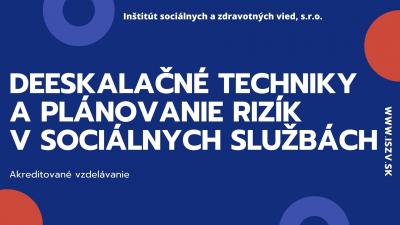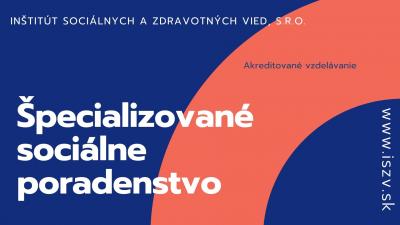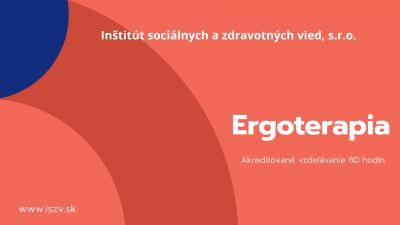Priama demokracia ako concept
Annotation: The paper focuses on Direct democracy as a concept. It is divided into two relatively separate parts. The paper aims to acquaint the reader with the very concept of direct democracy, especially with the emphasis on forms of direct democracy prevailing in territorial conditions of countries with a democratic system of government.
Keywords: democracy, direct democracy, concept, representative democracy, referendum, plebiscite
Anotácia: Príspevok sa zameriava na tému priamej demokracie ako concept. Je rozdelený do dvoch relatívne samostatných častí. Cieľom príspevku je predovšetkým čitateľa oboznámiť so samotným konceptom priamej demokracie a to predovšetkým s dôrazom na formy priamej demokracie prevládajúce v územných podmienkach krajín s demokratickým štátnym zriadením.
Kľúčové slová: demokracia, priama demokracia, koncept, zastupiteľská demokracia, referendum, plebiscit
INTRODUCTION
The topic of direct democracy has long been topical and often discussed in society. Nevertheless, many authors fail to pay enough attention to it in their works for several reasons. Thus, direct democracy remains a frequently mentioned topic, but in its essence, still relatively unknown to the public. These are the main reasons why we address this topic in the paper.
The paper is conceived as a theoretical-analytical and consists of a coherent text divided into two relatively separate, consecutive parts.
The paper aims to acquaint the reader with the very concept of "direct democracy", especially with the emphasis on forms of direct democracy prevailing in countries' territorial conditions with a democratic system of government.
DIRECT DEMOCRACY AS A CONCEPT
The very concept of democracy is made up of two subordinate terms. These are direct and indirect democracy (representative). The bilateral division of the mentioned concept came from a theoretical and practical perspective at the turn of the 18th and 19th centuries.
Direct democracy is applied in those situations in which the people, as the bearers of power, participate in public affairs administration directly, personally. The opposite of direct democracy is then logically the already mentioned representative democracy. This form of democracy also prevails in the territorial conditions of the Slovak Republic. This finding is also directly supported by Article 2 para. 1 of the Slovak Constitution, which stipulates that: "State power comes from citizens who exercise it through their elected representatives or directly."
Using the method of deduction to the cited provision, we can conclude that in the legislation of the Slovak Republic, representative democracy is a superior concept and the one more widely used.
From a global perspective, however, the older historical form of government is direct democracy. It developed in the conditions of the Greek city-states. However, the then form of democracy was based on different values and pillars than it is today. Nevertheless, we consider it important to address this topic more thoroughly in our paper. It is important to note that at the time of the rise of direct democracy in the Greek polis, it involved relatively small groups of citizens who were directly involved in the process of democracy.1
In order for the paper to fulfill its stated goal, we consider it important to determine what aspects the democratic system of government had to meet in the time of the development of direct democracy. According to Robert A. Dahl, these are the following 6 conditions:
(a) Citizens must concur in their interests in order to share and act in accordance with the common good.
(b) The second requirement is a high degree of Community homogeneity. Differences in economic resources, religion, culture, race, or language would lead to political disagreements and, consequently, to the system's dysfunction.
(c) The number of citizens participating in the process must be relatively low. This applies in particular to the fulfillment of the already mentioned condition of homogeneity of citizens. Secondly, however, citizens in smaller groups are better aware of their contribution to the common good.
(d) Another condition was the ability of citizens to gather and make political decisions directly.
(e) Citizens' activity included not only attending meetings but also participating in governance.
(f) The last requirement was that the city-state had to remain autonomous. This means that each municipality had to remain politically, militarily, and economically independent.2
Even looking at the said requirements, it is clear that these are in contradiction with the modern understanding of democracy. However, the basis of the concept itself remains the same even today. Thus, the people's government is exercised by the personal participation of citizens in the making of political decisions.
As already mentioned, today, we are witnessing the superiority of representative democracy over the direct one. There are several reasons why this change has occurred throughout history. One of the most important is the fact that, due to population growth, it is no longer possible for citizens to gather and make their own decisions personally. Another reason is that the nation-states are far larger units than the Greek polis were. Thus, today, the people are no longer able to carry out their political powers by themselves, but they do so through their elected representatives instead. By choosing their elected representatives, the people automatically transfer the source of power to them. In this way, elected representatives subsequently gain the legitimacy to exercise power in the state.3
Representative democracy also has the task of dealing with the low interest of citizens in the administration of public affairs and also to solve the problem of "political ignorance“ of the majority of the population.
Comprehensive direct democracy and the connected direct decision-making by citizens on all relevant matters is no longer feasible for the reasons stated above. Thus, in today's understanding, direct democracy itself cannot be understood as one comprehensive system, but only as a set of measures through which citizens implement it. These measures then complement the decision-making process of representative democracy.
FORMS OF DIRECT DEMOCRACY
As already mentioned, the indirect participation of citizens in the performance of public affairs is complemented by measures and forms of direct democracy. This is primarily to correct and address the shortcomings of representative democracy. These shortcomings are, above all, the emergence of conflict situations and differences of opinion of the population inside but also outside the political arena. Another shortcoming is the inability to reach a compromise on certain issues in the representative bodies in certain situations. It is for these cases that forms of direct democracy are also incorporated into representative democracy.4
In the modern sense of democracy, the two basic forms of direct democracy are referendum and plebiscite.
A referendum is the most commonly used form of direct democracy. It is a permanent, constitutional institution that is initiated either by citizens or their elected representatives. Through a referendum, citizens are then presented with a serious societal question, to which they answer in a direct election.5
A plebiscite or popular vote is also an instrument of direct democracy. All citizens with the right to vote can vote on a serious political issue concerning a territorial organization, such as borders (state, municipality), territory changes, etc.
Unlike the referendum, the plebiscite is not announced in cases determined in advance by the constitution but according to the needs or requirements of citizens (petition). In various countries, in addition to the citizens' initiative, the head of state, government, or parliament can initiate a plebiscite.6
CONCLUSION
The article dealt with the topic of direct democracy. It was divided into two relatively separate, consecutive parts. The first part deals with direct democracy, especially as a concept, and acquaints the reader with the basic elements of its historical origin and subsequent development. In the second chapter, the author presents the two most fundamental forms of direct democracy prevailing in countries with a democratic system of government. These are the referendum and the plebiscite. What are these two concepts, and what is the difference between them are the basic questions that this part of the article should have answered.
Concerning the prepared article, we can state that direct democracy has undergone significant changes in its historical development and has transformed into its current form, which meets the requirements of the public. However, direct democracy and its forms also have their shortcomings. Nevertheless, addressing this topic would go beyond the scope of this paper.
The author of the article based his work on several sources from renowned authors, highly proficient in the topic. Several scientific methods were used to prepare the article, particularly the method of analysis, synthesis, comparison, historical method, and descriptive method.
Author: JUDr. Samuel Csóka
Externý doktorand – Katedra trestného práva a kriminológie, Právnická fakulta Trnavskej univerzity v Trnave
REFERENCES
ALTMAN, D. Direct Democracy Worldwide. 2011. Cambridge University Press. ISBN: 978-1107427099
DAHL, R.A. 1989. Democracy and its critics. New Haven and London: Yale University Press. 397 p. ISBN 0-300-04938-2
GRYGOVÁ, E. 1990. Plebiscit a referendum v modernej demokracii. In Právny obzor. ISSN 0032-6984
MCGANN, A.: The logic of Democracy: Reconciling Equality, Deliberation, and Minority Protection. Ann Arbor: University of Michigan Press. 2006. 243 p. ISBN 0-472-06949-7
SPÁČ, P. Priama a zastupiteľská demokracia na Slovensku. Brno: Centrum pro studium demokracie a kultury. 2010. 278 p. ISBN 978-80-7325-238-0
VERHULST, J., NIJEBOER, A. Direct Democracy - Facts and Arguments about the Introduction of Initiative and Referendum. Democracy International Brussels 2007. Available at: https://www.democracy-international.org/sites/default/files/PDF/Publicat...
1 DAHL, R.A. 1989. Democracy and its critics. New Haven and London: Yale University Press., p. 44
2 DAHL, R.A. 1989. Democracy and its critics. New Haven and London: Yale University Press., p. 46
3 ALTMAN, D. Direct Democracy Worldwide. 2011. Cambridge University Press
4 MCGANN, A.: The logic of Democracy: Reconciling Equality, Deliberation, and Minority Protection. Ann Arbor: University of Michigan Press. 2006., p. 141
5 VERHULST, J., NIJEBOER, A. Direct Democracy - Facts and Arguments about the Introduction of Initiative and Referendum. Democracy International Brussels 2007.
6 GRYGOVÁ, E. 1990. Plebiscit a referendum v modernej demokracii. In Právny obzor. p. 24-27
























